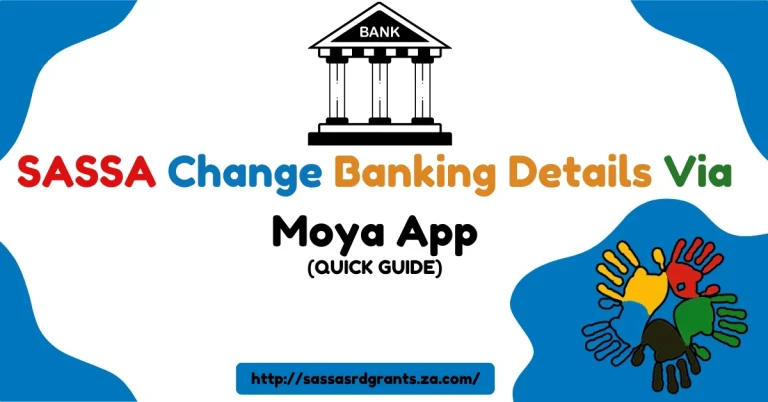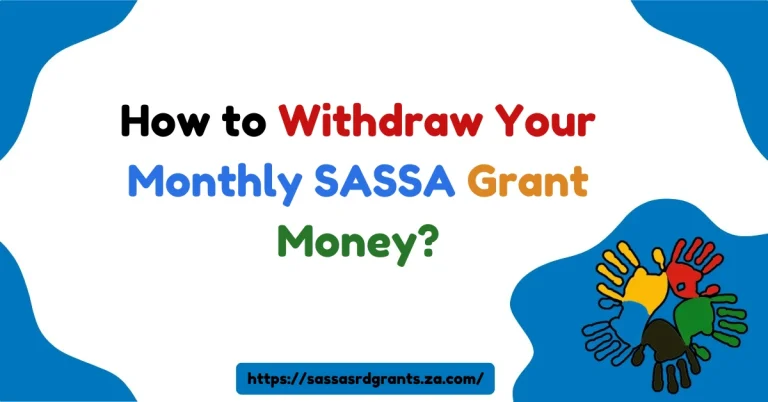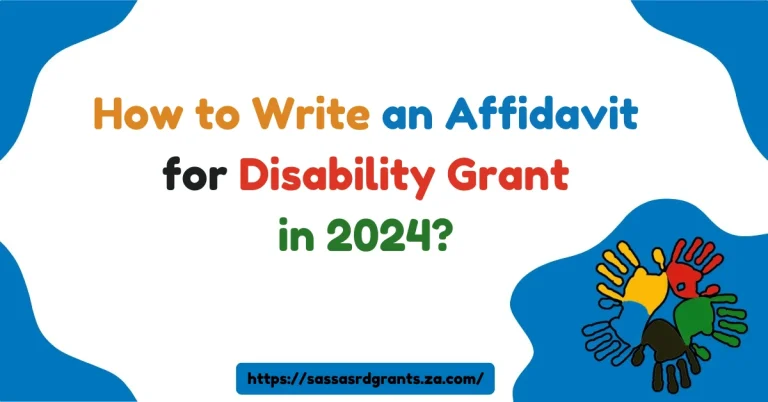What To Do If Your SRD Grant Is ‘Referred SAFPS’?
If you’re reading this, you might have applied for the Social Relief of Distress (SRD) grant and found your status marked as “Referred SAFPS.”
At first glance, this might seem confusing or concerning, but understanding what it means and what steps to take is crucial. In this guide, I’ll break down exactly what this status entails, why it happens, and how to resolve the situation.
The SRD grant provides much-needed assistance to individuals facing financial distress, but sometimes, due to security and fraud prevention measures, applications are flagged for further verification.
If your status has been referred to SAFPS (Southern African Fraud Prevention Service), it doesn’t automatically mean you’re in trouble—it simply means SASSA (South African Social Security Agency) is taking extra precautions to verify your information.
What To Do If Your SRD Grant Is ‘Referred SAFPS’?(Short Answer)
If your SRD grant status shows “Referred SAFPS,” it means SASSA has flagged your application for further fraud checks through the Southern African Fraud Prevention Service (SAFPS). Review your details for accuracy, then appeal via the SASSA Appeals website. Provide supporting documents and explain why the referral was an error. Monitor your appeal status regularly, as the process may take 60-90 days for resolution.
What Does “Referred SAFPS” Mean?
When your SRD application status reads “Referred SAFPS,” it means that SASSA has referred your application to the Southern African Fraud Prevention Service for further checks.
This is a standard procedure to ensure that the grant is distributed to those who genuinely qualify, without any fraudulent claims.
SAFPS plays a key role in preventing fraud by maintaining a database of individuals who have previously been involved in fraudulent activities.
If your ID number or application details match or raise concerns, your application will be referred to SAFPS for additional screening.
Why Is My Application Referred?
Here are the main reasons why your application might be flagged:
- Discrepancies in your application: If your submitted details don’t match SASSA’s records or appear suspicious, your application may be referred for verification.
- Past fraud activities: If your ID or personal information has been linked to fraudulent claims in the past, your SRD application will be flagged for further review.
- Data inconsistencies: Even if no fraudulent activity has occurred, inconsistencies in your personal or financial data can trigger a referral to SAFPS.
While this process can feel alarming, keep in mind that being referred to SAFPS doesn’t automatically mean that you’ve committed any wrongdoing. It’s simply a security measure to ensure all applicants are thoroughly vetted.
What Should I Do If My SRD Status is “Referred SAFPS”?
If you see your SRD status as “Referred SAFPS,” don’t panic. There are clear steps you can follow to resolve the issue and potentially clear your name:
- Stay calm and review your details: Double-check the information you provided in your SRD application. Look for any inaccuracies or discrepancies that might have triggered the referral.
- Appeal the decision: If you believe your application was falsely flagged, you have the right to appeal. Here’s how:
- Visit the official SASSA appeal website: You can appeal through the SASSA portal by visiting https://www.sassa.gov.za/
- Log in or create an account: If you haven’t already, create an account or log in to access the appeal form.
- Fill out the appeal form: Ensure that all your details are correct, and explain why you believe the referral was a mistake.
- Submit supporting documents: Provide any documents that support your case, such as ID verification, proof of income, or other relevant information.
- Await review: Once submitted, the Independent Tribunal for Social Assistance Appeals (ITSAA) will review your appeal. The process can take between 60 to 90 days, so patience is key.
Understanding SAFPS Verification and Its Purpose
SAFPS exists to protect social grants from fraudulent claims. While frustrating, the extra layer of verification ensures that only legitimate applicants receive support. Here’s why the process is important:
- Prevents fraud: SAFPS helps ensure social relief funds go to those who genuinely need them, reducing the likelihood of fraudulent activities.
- Protects your identity: If your ID number has been used fraudulently, this process allows you to clear your name and prevent further misuse.
Can I Be Accused of Fraud?
If your application is flagged as “Referred SAFPS,” it’s important to note that this does not mean you are guilty of fraud. It’s merely a preventative measure. However, if SASSA finds evidence of fraudulent activity, the consequences can be severe:
- Legal action: SASSA can pursue legal action, which could result in fines or imprisonment.
- Permanent disqualification: You could be banned from applying for social grants in the future if found guilty of fraud.
The best course of action is to ensure that all the information in your application is accurate and that you only apply if you meet the eligibility criteria for the SRD grant.
What If My Appeal Is Rejected?
If your appeal is rejected and you still believe you are entitled to the grant, there are additional steps you can take:
- Seek legal assistance: If you feel your case has been wrongly dismissed, consulting a legal professional specializing in social grants or administrative law can be beneficial. They will help you navigate the legal system and assess your chances of success.
- Collect supporting documents: Gather any documents that can support your claim, including proof of your income, employment status, or correspondence with SASSA. This will strengthen your case if you decide to take legal action.
- Take legal action: If necessary, you can file a lawsuit against SASSA. With the help of your legal representative, prepare the necessary court documents and file the case in the appropriate court. If the court rules in your favor, SASSA will be required to reconsider your application.
How To Avoid SRD Application Delays
To prevent future delays or referrals to SAFPS, ensure that your SRD application is accurate and up-to-date. Double-check your details before submitting your application to avoid inconsistencies or errors that could trigger additional verification processes.
Additionally, keep records of all communication with SASSA, as this can be useful if you need to appeal or resolve any issues.
Frequently Asked Questions (FAQ’s)
1. What does “Referred SAFPS” mean for my SRD grant application?
“Referred SAFPS” means your SRD application has been flagged by SASSA for fraud checks through the Southern African Fraud Prevention Service.
2. Why was my SRD grant referred to SAFPS?
Your application may be referred due to discrepancies, potential past fraudulent activity, or inconsistencies in your details.
3. How do I appeal the “Referred SAFPS” status?
You can appeal by visiting the SASSA appeal website, filling out the form, and submitting supporting documents.
4. How long does the SAFPS appeal process take?
The appeal process can take 60 to 90 days for the Independent Tribunal for Social Assistance Appeals (ITSAA) to review.
5. Does “Referred SAFPS” mean I’m guilty of fraud?
No, it doesn’t imply wrongdoing. It’s a precautionary measure for further verification of your information.
6. Can I still receive the SRD grant if my application is referred to SAFPS?
Yes, if your appeal is successful, you can still receive the SRD grant after verification.
7. What happens if my appeal is denied?
If your appeal is denied, you can seek legal assistance or consider filing a lawsuit to contest the decision.
8. How can I avoid my SRD application being referred to SAFPS?
Ensure your application details are accurate and consistent to avoid being flagged for fraud checks.
Conclusion
Being marked as “Referred SAFPS” can be frustrating, but it’s important to stay calm and follow the appropriate steps to resolve the issue. By understanding why this happens and how to appeal, you can increase your chances of a successful outcome.
Always ensure that your details are accurate, and don’t hesitate to seek legal advice if you feel your case has been mishandled. This extra layer of verification might take time, but it’s designed to protect the integrity of the SRD grant system and ensure that relief reaches those who truly need it.






